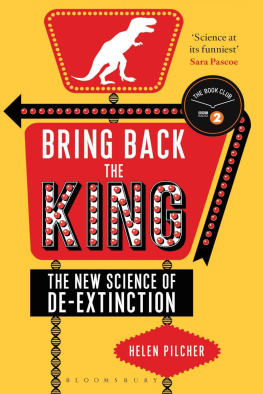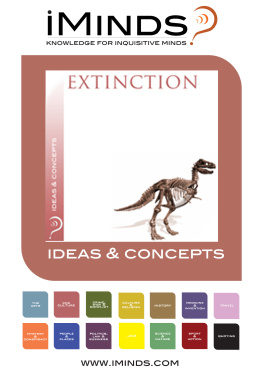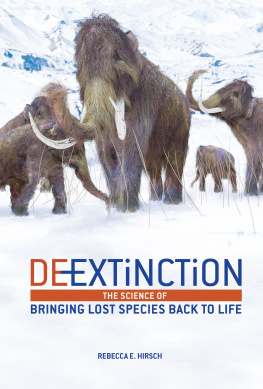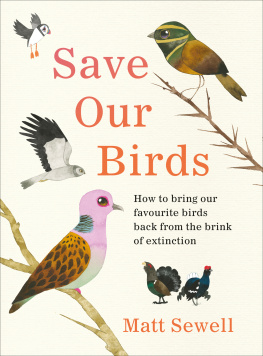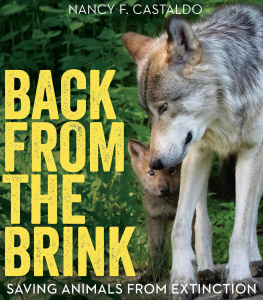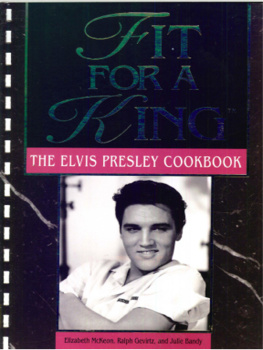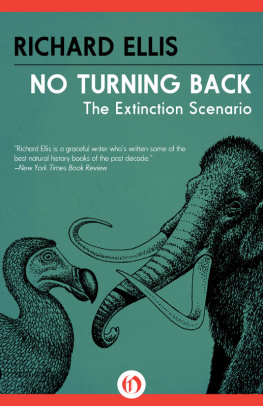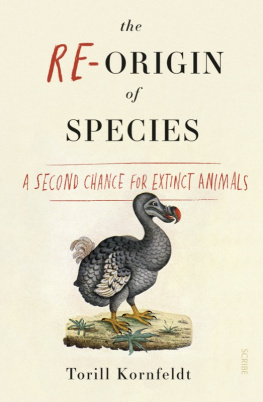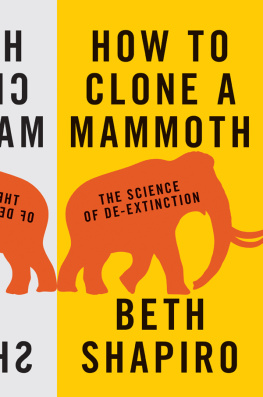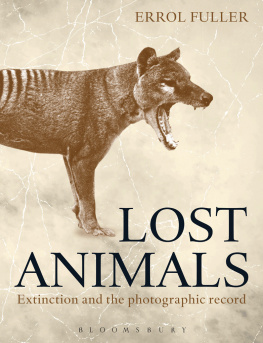Pilcher - Bring back the king the new science of de-extinction
Here you can read online Pilcher - Bring back the king the new science of de-extinction full text of the book (entire story) in english for free. Download pdf and epub, get meaning, cover and reviews about this ebook. City: London, year: 2016;2017, publisher: Bloomsbury Sigma, genre: Detective and thriller. Description of the work, (preface) as well as reviews are available. Best literature library LitArk.com created for fans of good reading and offers a wide selection of genres:
Romance novel
Science fiction
Adventure
Detective
Science
History
Home and family
Prose
Art
Politics
Computer
Non-fiction
Religion
Business
Children
Humor
Choose a favorite category and find really read worthwhile books. Enjoy immersion in the world of imagination, feel the emotions of the characters or learn something new for yourself, make an fascinating discovery.
- Book:Bring back the king the new science of de-extinction
- Author:
- Publisher:Bloomsbury Sigma
- Genre:
- Year:2016;2017
- City:London
- Rating:3 / 5
- Favourites:Add to favourites
- Your mark:
Bring back the king the new science of de-extinction: summary, description and annotation
We offer to read an annotation, description, summary or preface (depends on what the author of the book "Bring back the king the new science of de-extinction" wrote himself). If you haven't found the necessary information about the book — write in the comments, we will try to find it.
If you could bring back just one animal from the past, what would you choose?
It can be anyone or anything from history, from the King of the Dinosaurs, T.
rex, to the King of Rock n Roll, Elvis Presley, and beyond.
De-extinction - the ability to bring extinct species back to life - is fast
becoming reality. Around the globe, scientists are trying to de-extinct all
manner of animals, including the woolly mammoth, the passenger pigeon and a
bizarre species of flatulent frog. But de-extinction is more than just
bringing back the dead. Its a science that can be used to save species, shape
evolution and sculpt the future of life on our planet.
In Bring Back the King , scientist and comedy writer Helen Pilcher goes on a
quest to identify the perfect de-extinction candidate. Along the way, she asks
if Elvis could be recreated from the DNA inside a pickled wart, investigates
whether its possible to raise a pet dodo, and considers the odds of a 21st
century Neanderthal turning heads on public transport.
Pondering the practicalities and the point of de-extinction, Bring Back the
King is a witty and wry exploration of what is bound to become one of the
hottest topics in conservation - if not in science as a whole - in the years
to come. READ THIS BOOK - the King commands it.
__
Review[Pilcher] asks provocative questions about both the nature of science and
what it means to be human. Pilcher uses humor effectively to keep readers
engaged, and there is a great deal here to entertain and educate them. -
Publishers Weekly
A unique perspective on our responsibility to preserve the chain of being of
which we are only a part. - Kirkus Reviews
With humour and accuracy, Helen Pilcher surveys the wondrous array of
wildlife de-extinction and preservation projects that employ current
breakthroughs in genomic technology. (Plus Elvis, who was a different kind of
wild.) - Stewart Brand author of WHOLE EARTH DISCIPLINE and co-founder of
Revive & Restore
Lighthearted but informative read . . . buy this title as a great insight
into modern biology and a more accessible look at de-extinction. - Henrietta
Verma, Booklist
About the Author
Helen Pilcher was a stand-up comedian for more than ten years, before the
arrival of children meant she couldnt physically stay awake beyond 9pm.
During this time, she performed at the Edinburgh comedy festival, at Londons
Comedy Store, and at various smoky pubs and clubs across Britain. She was a
finalist for Jongleurs New Act of the Year (1998, 1999), the BBC New Stand Up
Competition (1999) and Channel 4s So You Think Youre Funny (1999). In 2002,
she teamed up with fellow comedian Timandra Harkness to write and perform `The
Comedy Research Project a stand-up comedy show commissioned for the very
first Cheltenham Science Festival. Unusually, Helen is also a professional
science writer, with a PhD in stem-cell biology. She was formerly a journalist
for Nature online, specialising in genetics; before that, she ran the Science
in Society programme at the Royal Society, and before that, she worked as a
senior scientist for a biotechnology company, engineering a series of human
stem cell lines for transplantation into damaged human brains, this following
on from her doctoral research into stem-cell therapy for Alzheimers disease.
Pilcher: author's other books
Who wrote Bring back the king the new science of de-extinction? Find out the surname, the name of the author of the book and a list of all author's works by series.

